Animated Films Exploring Oppression
When we think of children’s films, especially animated ones, our first instinct is to say, “Oh, that’s cute.” The words “animated,” “G-rated,” or “children’s film” connote bright colors, catchy songs, and happy endings. For the most part, that’s a lot of what you’ll get in these types of films. However, many children’s films are much darker than their target audience, and the adults who watch alongside that audience, might expect. Director and animator Don Bluth once said you can show kids almost anything as long as you have a happy ending, and animated films frequently push that envelope. In the age of social media, it’s not uncommon to go on YouTube and find a video with a title like, “Top Ten Scariest Disney Moments” or “Top Ten Scary Nostalgic Films.” In the comment section of such videos, you’ll find adult viewers saying things like, “I can’t believe my parents let me watch this” or, “Wow, that creeped me out when I was six! Still does!”
One of the darkest themes found in popular children’s films is the theme of oppression. Directors and writers have proven they’re not afraid to go deep into the sinister reaches of the psyche, and it shows in their work. Many of the films we enjoyed as kids deal with the oppression, subjugation, or even attempted murder of the protagonists at the hands of antagonistic forces. Some films have deep and multifaceted historical connections that the target audience might not get, but adults will find absolutely chilling. These themes seem scary and inappropriate at first blush, but they give animated films a much broader audience. As the target demographic grows up, they find new ways to appreciate films and characters who guided them through childhood and prepared them for the harsh realities of the real world.
For the purpose of our discussion, we will define “oppression” using the traditional Merriam-Webster dictionary: “unjust or cruel exercise of authority or power.” We will also keep in mind the secondary Merriam-Webster’s definition, “a sense of being weighed down in body and mind.” In most if not all cases, cruel exercise of authority leads to this second definition, providing major conflict arcs for characters suffering the consequences.
The Hunchback of Notre Dame
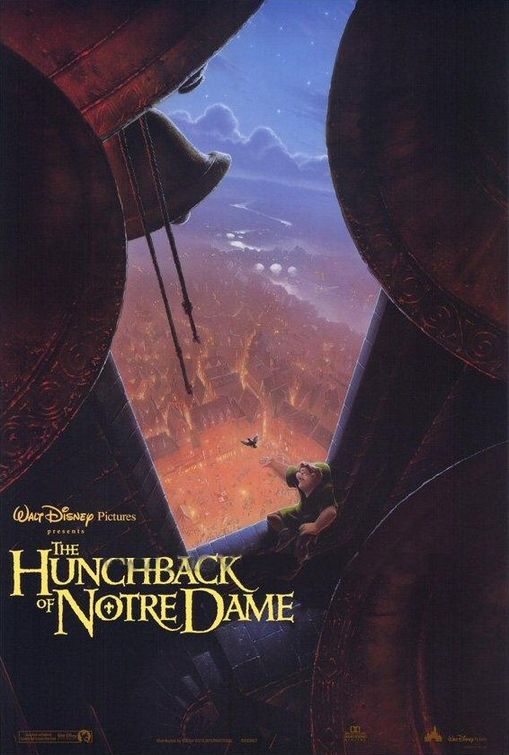
Disney’s The Hunchback of Notre Dame, released circa 1996, is probably the darkest and most infamous film in the Disney canon. To its credit, the film is much lighter and softer than the Victor Hugo novel that provides its source material. In the novel, Quasimodo is a misanthrope who often lashes out at the few people he meets and lives a miserable existence in Notre Dame’s bell tower. Claude Frollo is a fanatical priest and a symbol for corruption of church. Esmeralda’s promiscuity is an accepted part of her lifestyle, and Quasimodo’s love for her is arguably obsessive and unhealthy, such that he jumps into her grave after her death and starves himself in despair. In contrast, the Disney film is downright uplifting. Nostalgia Critic Doug Walker calls it an “ugly duckling story,” where the characters are far more two-dimensional and sympathetic. The source material, when used at all, is glanced over or sugarcoated.
Do not make the mistake of thinking Hunchback is all sweetness and light, though. Many of its scenes are disturbing, and many of the novel’s deeper themes are left intact, including the oppression theme. Villain Claude Frollo, a judge in this version, believes himself morally superior to everyone in Paris, especially the Roma. Frollo calls this ethnic group by the name “Gypsies,” as does most of Paris, although this is now regarded as a slur. (For the purpose of our discussion, the word “Gypsy” is only used in relation to the film itself, and analysis). He “[sees corruption everywhere except within” and makes it his mission to purge Paris of the Roma people group, who he sees as the personification of “vice and sin.” The film doesn’t waste any time showing the lengths Frollo will go to in achieving this goal. In the opening scenes, he captures a group of Roma trying to escape Paris and indirectly causes the death of a young mother with an infant. When Frollo sees the baby is deformed, he immediately tries to drown the little boy in a well. “This is an unholy demon; I’m sending it back to Hell where it belongs,” Frollo proclaims to the Archdeacon, who tries to stop him. Only the Archdeacon’s veiled threat toward Frollo’s immortal soul keeps the baby alive, but not safe. Frollo begins oppressing and subjugating the child from the moment he names him. The name “Quasimodo” means “half-formed,” indicating Frollo has labeled this child as “other” and “lesser” forever.
Quasimodo’s oppression continues for the next twenty years. He calls Frollo “Master,” which indicates a servant-employer or slave-overseer relationship rather than a father-son one. Quasi also obeys Frollo without question and readily agrees with the latter’s assertions that he is deformed, ugly, and a monster. Frollo drills a punitive and legalistic version of Catholicism into Quasi’s head using alphabet lessons. For example, A stands for abomination, B for blasphemy, and E, eternal damnation. The film doesn’t delve into Quasimodo’s religious convictions, but it’s not a reach to assume he thinks disobeying Frollo could mean a one-way trip to Hell. At the least, Quasi is sure disobedience can only end in disaster, and he’s tragically proven right.
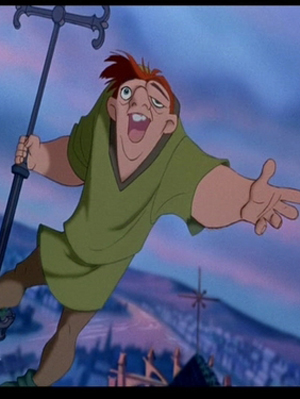
Quasimodo’s “I Want” song, a solo titled “Out There,” gives voice to his wish for independence and a chance to get to know people he has only seen from the bell tower. Emboldened by his friends the gargoyles, Quasimodo decides to take a chance and sneak out to attend the Festival of Fools. This goes great at first; he meets and is smitten with Esmeralda, and the crowd crowns him their king. However, Quasi’s kingly status is based on his ugliness. It doesn’t take long for the crowd to turn on him. He ends up half stripped, with his naked back exposed, and tied to a huge revolving wheel as festival-goers throw rotten fruit and other objects at him. Frollo watches from a box seat, and though Quasimodo pleads for help, it isn’t given. The recently commissioned Captain Phoebus also asks Frollo for “permission to stop this cruelty.” Frollo only smirks and says, “A lesson needs to be learned here.” It is only when Esmeralda defies Frollo that Quasi is released. He immediately takes on the guilt for others’ sins, promising never to disobey again. Frollo offers forgiveness, but it’s cold lip service, with no warmth or compassion behind the sentiment.
If it were only Quasimodo Frollo oppressed, Hunchback wouldn’t have made the list. It might not be considered a deep film, in fact. After all, villains are supposed to make protagonists miserable. They can be downright cruel or even sadistic, as seen with other Disney villains (Lady Tremaine from Cinderella, Gaston from Beauty and the Beast, and several others). What sets Claude Frollo and Hunchback apart is that this villain is not content to oppress on an individual level. His twisted view of himself and of Christianity inspires him to commit murder and attempt genocide on at least two occasions. In a pivotal scene, Frollo accuses a miller and his family, including little children, of harboring Gypsies and orders Phoebus to burn down their cottage with them in it. When Phoebus refuses, Frollo starts the fire himself. Thanks to Phoebus, the miller’s family escapes safely, but Frollo goes on a rampage to kill the offending soldier, netting him a potentially mortal injury. This scene alone raises many discussion points about the corruption of government, when civil disobedience is acceptable, and at what point being an innocent bystander makes you as guilty as the oppressor.
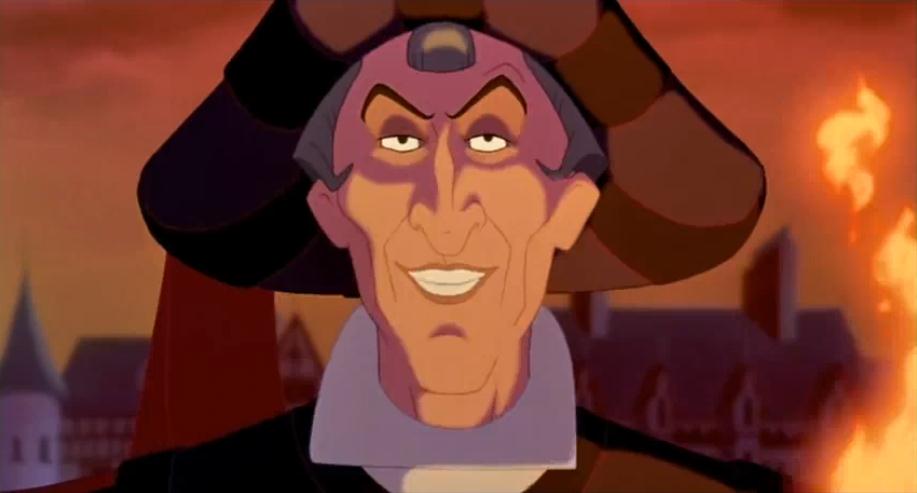
Frollo’s greatest and most disturbing example of oppression comes from his interactions with the Roma Gypsies of Paris, Esmeralda in particular. He lusts after her while simultaneously seeking her blood; the solo “Hellfire” puts this in gruesome terms with a backdrop of sinister Gregorian chanting. Frollo makes repeated sexual overtures toward Esmeralda and eventually sentences her to burn at the stake for witchcraft. “Choose me or the fire,” he threatens during this scene, to which Esmeralda spits in his face. Had Quasimodo not scaled the cathedral to save her, our heroine would have burned alive. Yet Frollo will not give up. He continues pursuing Esmeralda even in her weakened and almost dead state, and takes out his wrath on her friends and family in an attempted genocide at the Court of Miracles. When Quasimodo attempts to save his beloved, Frollo nearly stabs him to death. Frollo’s quest for Esmeralda is perhaps his most twisted example of oppression and madness; he desires her, but because of his legalism and rabid intolerance, can only let that desire consume him from the inside out. The woman Frollo claims to desire is also a member of an ethnic group he calls “vermin,” “evil,” and performers of Satanic activities. This warped dichotomy brings up themes of religious tolerance vs. intolerance, ethnic cleansing, and the persecution of those with deformities or disabilities.
The Hunchback of Notre Dame is certainly a deep film, and perhaps confusing to little kids who probably shouldn’t watch it (this writer was about ten when she saw it in theaters). This writer is a devout Christian who grew up in a practicing home, and was legitimately confused over Frollo’s wicked behavior vs. his desire to purge witchcraft from Paris. That is, this writer had been taught that witchcraft was a sinful and dangerous thing, so she wasn’t sure who was ultimately right in the debate between alleged witchcraft vs. kindness and tolerance. Parental guidance helped her to understand why Frollo’s motives had nothing to do with God, Jesus, or the Bible’s stance on witchcraft or differing religions. Thus, she now treasures this theme and discussion, and was inspired to speak up for oppressed persons. As a Christian and adult with a disability, this writer now also finds herself simpatica with Quasimodo, who deserves and ultimately finds much better than Frollo offered him. While dark, scary, and sometimes confusing, Hunchback more than earns its place in the Disney canon, and a place in the home of families who seek to introduce topics like the true nature of Christianity and other religions, civil disobedience, and relationships with the authority of government and church.
The Brave Little Toaster
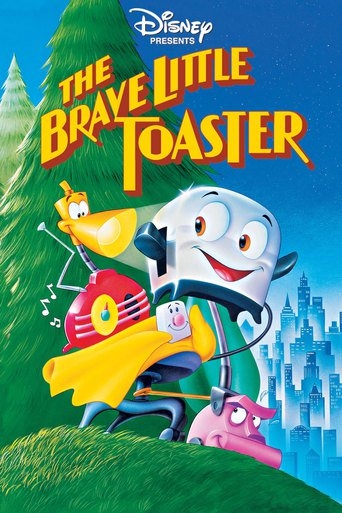
Released in 1987 and based on a 1986 novel by Thomas M. Disch, The Brave Little Toaster had a limited theatrical release. Director Jerry Rees originally intended it for evening screenings at film festivals. Currently, most viewers remember seeing it on home video or the Disney Channel. The Brave Little Toaster is not technically a Disney film; Disney only bought the rights to release it on video and air it on television. It’s also not affiliated with any other well-known animation companies like Dreamworks or Fox. Yet it has gained quite a cult following, including and especially young adults who have thoroughly analyzed its plot, characters, and symbolism. Jerry Rees actually admits young adults were Toaster‘s target audience all along; the film was never supposed to be “for kids.” With that said, plenty of kids and families have watched it over the decades, coming away with new thoughts and knowledge about its deep and dark themes.
At first, Toaster is as innocent as they come, if a bit odd. Most films of its kind focus on adorable human children or cute animals. This one introduces us to a protagonist team of household appliances. Yes, that’s right–appliances with eyes, mouths, and completely sentient personalities. As Doug Walker puts it, “This sounds like a film for one-year-olds that should have no effort put into it.” Indeed, the first scenes show our heroes–a vacuum, radio, lamp, electric blanket, and the eponymous toaster–cleaning their cottage and bopping around to “Tutti-Frutti.” How cute! How fun! The appliances are animated mostly in primary colors–bright blues, reds, and yellows. They’re even named with the whimsy of a little kid–Blankey and Lampy, for instance. If their names don’t end in a long “e,” they are referred to by appliance names (the toaster is named, well, Toaster. The same is true for Radio). Even the vacuum is named Kirby only because that’s his brand name. How could a film like this have anything dark in it?
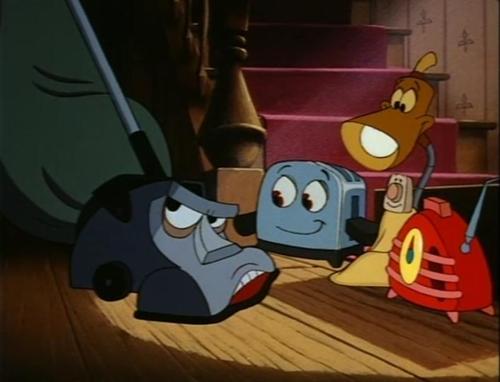
The answer is, quite easily. The age of innocence ends quickly for our appliance friends. We learn they’ve basically been abandoned at their cottage, waiting for their “Master,” a little redheaded kid with glasses, to return. Unlike with Hunchback of Notre Dame, these appliances call their child friend Master out of love, and serve him tirelessly. Their entire reason for being rests on him, which is why they’re devastated when a car drives up and someone puts a For Sale sign in front of their home. Convinced Master will not return to the cottage, the appliances determine to find and reunite with him. Their journey starts well, with a funny montage of failed traveling attempts and an uplifting song about how they’re going off on a grand adventure. Yet the idea that our protagonists have been driven from their home and are without purpose or owner is never far from their minds or the viewers’. The inherent tension often causes them to argue or snipe at each other, and leads to some sobering realizations.
One of The Brave Little Toaster‘s first oppressive scenes occurs in a bucolic meadow, where the appliances stop to rest and interact with local wildlife. Said wildlife includes an opera-singing fish, a chorus of frogs, and a colony of small rodents for Blankey to snuggle with. Toaster finds his own friend in a bright yellow narcissus flower, who becomes enamored with her own reflection in Toaster’s metal frame. When the flower gets too far into Toaster’s personal space, he leaves. The next shot we see is the heartbroken flower, wilting and dying. Many adult fans say this is a disturbing scene, and claim it’s one that affected them even as children. The death of a flower is not as traumatic as the death of a major, sentient character, but here, it’s treated heavily because this is the appliances’ first-ever encounter with death of another creature (they have seen the cottage’s air conditioner “die,” but dismissed it because as Kirby says, “Well, he was a jerk, anyway.”) Worse, both fans and the Toaster production team are quick to point out the dead narcissus flower is the same shade of yellow as Blankey. So far, the other appliances have rebuffed Blankey because of his childlike nature and tendency to be a crybaby. Yet the underlying message of the narcissus is, if the other appliances don’t accept the blanket, he too will wither and die, emotionally if not physically. In other words, it takes death to show our protagonists they have been systematically and unconsciously oppressing one of their own. Toaster, Kirby, Radio, and Lampy have done what people tend to do in times of upheaval and tension. They forget that the most vulnerable and unlikely among them are working toward their shared goals, and may be the team members needed most. Thus, those team members are left feeling purposeless and adrift, and some crumple.
Thanks to the encounter with the narcissus, our other heroes do learn to accept Blankey as an equal. Yet their trials and oppression are far from over. During the next few scenes, we see each appliance undergo some type of traumatic stress. Toaster has a vivid nightmare where he shorts out, almost kills the Master, and is nearly dropped into a bathtub while plugged in. Kirby has what amounts to a panic-induced seizure at a waterfall and nearly swallows his cord, while Lampy nearly dies trying to save Blankey during a lightning storm. But it’s Radio whose traumatic moment catapults the heroes into their next huge trial. When all the appliances are swept into quicksand, Radio’s antenna sticks up, alerting parts shop owner Elmo St. Peters to the group’s presence. St. Peters tosses the appliances into his truck, intending to dismember them for parts like tubes and motors. In a later, shadowed shot, the appliances quiver with fear while they watch a blender go through this process. Motor oil drips slowly and methodically onto the shop floor, directly correlating with human blood.
Having seen all they want of the St. Peters shop, the appliances ask other denizens how to escape. Their fellow “inmates,” in various stages of dismemberment, only laugh at them. They proceed to use the song “It’s a B Movie Show” to explain the hopelessness of their situation, as well as what it means to live in this environment. The song is filled with references to horror movies and the horror genre, including Frankenstein and Vincent Price. It also paints Elmo St. Peters as a nebbish, yet formidable villain, almost a Grim Reaper. There is a reference to the real Saint Peter, who according to Christian lore guards the gates of Heaven–but Heaven is the last place the inmates think they’re headed. If anything, they seem to fear lives of endless experimentation more than death. Yet they are too frightened to attempt escaping.
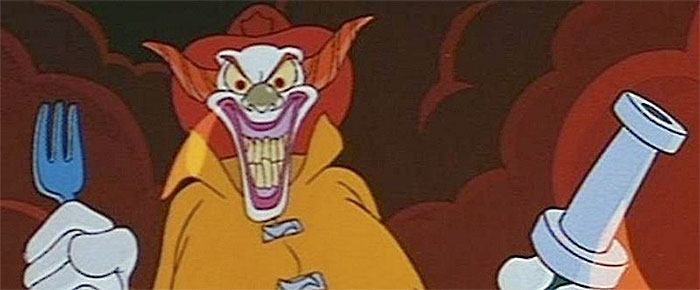
Many viewers who analyze this scene remark on veiled Holocaust imagery. Elmo St. Peters is often compared to Dr. Mengele, an evil physician who used his medical training to experiment on Auschwitz prisoners. Such an image becomes even more chilling when viewers realize that, like some of Mengele’s victims, the dismembered appliances are left alive and trying to cope with brokenness. One such appliance even speaks in a New York accent, using Yiddish colloquialisms. “Look at me! I’m a can opener, a lamp, and a shaver! Oh, God, I’m a mish-mash,” she cries, (using a short “o” on “mish-mash” instead of a short “a,” as per Yiddish inflection). Other inmates sport parts of each other, are functioning without major parts, or are simply resigned to their fates. It’s even speculated that the Hanging Lamp went insane after watching and helping St. Peters do so many jobs, not unlike the concentration camp victims forced to police, inform on, injure, or help kill their own people.
To the untrained viewer, it seems The Brave Little Toaster can’t explore oppression anymore than it already has. Once you hit Holocaust imagery, it might seem odd or impossible to go any heavier, but the production team did. After leading a “jailbreak” from the parts shop, our team of protagonists sets out to find their Master again, only to discover he’s headed for college. When the appliances visit the Master’s apartment, a team of modern gadgets like a computer and toaster oven toss them out a window into a disposal truck. Our heroes end up in a junkyard full of old cars, waiting to be picked up by a sadistic magnet and dropped onto a conveyor belt, where they will be “killed” beneath the “teeth” of a semi-sentient crusher. Our heroic appliances are treated to a song about how useless they’ve become, appropriately titled “Worthless.”
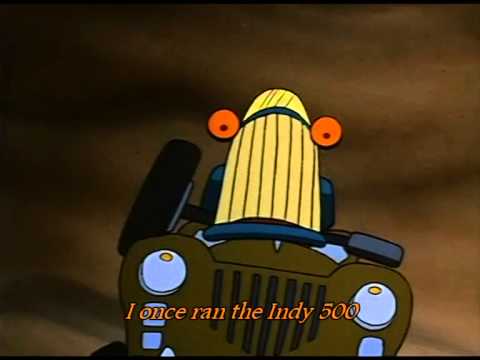
“Worthless” is arguably the most chilling song in The Brave Little Toaster, accompanying its most disturbing scene. The number features five cars with different stories of what their lives were like before the junkyard. They each take a verse, explaining that life and how they have become worthless to their former owners and society at large. Critics analyzing the scene find portraits of people in each verse. For instance, a blue car who sings, “I can’t take this kind of pressure” symbolizes a blue-collar worker who’s worn down thanks to the daily grind of life. A pink Cadillac, singing in the voice of an aging Valley Girl, proclaims, “I just can’t…I just can’t…I just can’t seem to get started.” On the surface, this is an indicator of what got her to the junkyard–she won’t start anymore. Analysis, however, indicates she’s a symbol of people suffering from chronic conditions like depression. In perhaps the most graphic example of symbolism, a truck in good working condition who was traded in for a newer vehicle and dumped sings, “Who would believe they would love me and leave me?” Determined to die on his own terms, the truck drives himself onto the conveyor belt, effectively committing “suicide” and shocking even the sadistic magnet.
Along with the symbolism and commentary on the people society calls worthless, this climactic number also hosts some more Holocaust imagery in its background. Some viewers compare the crusher to the gas chambers, and the cars in line to victims sharing their stories while awaiting the inevitable. The magnet, which seems to enjoy its gruesome job, could be compared to an SS guard or a Death Head, as they were sometimes called. The overall red tinge of the scene near its end, plus piles of “corpses” and gray, smoky skies, drive home the imagery. As for our appliance heroes, they are saved from this grim fate at the last second, partially because Toaster sacrifices himself to save Master (who had discovered the group and was trying to yank the appliances off the magnet). However, the fact that such a sacrifice was necessary, or that the appliances had to experience so much hopelessness, adds to their overall oppression and trauma.
The Brave Little Toaster ends happily, with the appliances tucked snugly in the Master’s car trunk and headed to college. Lampy even comments on the facts he could absorb while there. When this writer got a little older than the youngest audience members, she even picked up on some religious connections. That is, the appliances being safe with their Master reminded her of Christians feeling protected and loved in their relationships with Jesus. But as an adult, she cannot help but reminisce more on the appliances, cars, and other characters who weren’t so lucky. Like Hunchback, Toaster does a great job of juxtaposing happiness and safety with awareness that not everyone gets their happy ending. For children, this juxtaposition can and often does inspire the development of deep thought. It also inspires increased empathy and the desire to challenge oppressors, even if oppression is “inherent in life” or “inherent in the system.
An American Tail
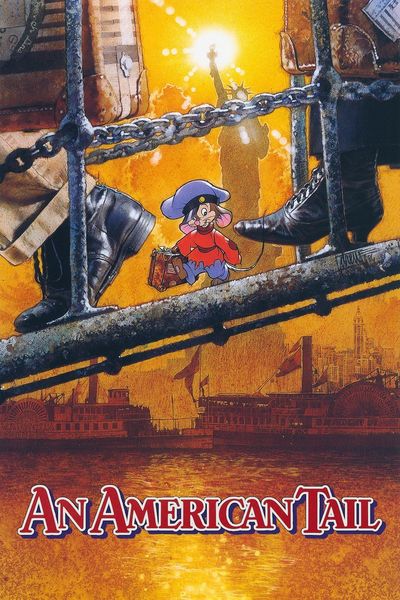
Of all the films we’ve discussed so far, An American Tail might look the most child-friendly and least likely to deal with heavy themes. Released in 1986, its protagonist is Fievel Mousekewitz, a little Russian mouse between the ages of five and seven. More than Quasimodo or Toaster and his appliance friends, Fievel is a relatable audience surrogate for kids who are drawn to his movie. He grows up in a close-knit mouse family with his Mama, Papa, older sister Tanya, and baby sister Natasha. The family is Jewish, which is made fairly explicit early on. However, they don’t undergo oppression or subjugation right away. Our first indication of the Mousekowitz’ heritage occurs when we see them celebrating Hanukkah. Not every kid watching might know what Hanukkah is, where Russia is, or why Fievel and his family are culturally different. But they’re likely to feel comfortable with An American Tail‘s setup.
True to form though, the warm fuzziness of these early scenes doesn’t last long. Recall that An American Tail‘s director is Don Bluth, an ex-Disney animator who believed children could and arguably should be exposed to darker themes as long as the plot ultimately ends well. Bluth and his team deliver early with a fairly scary, graphic cat attack. The Russian cats are sensible antagonists for Fievel and his mouse family; after all, “cats eat mice” is a basic fact little kids learn quickly. Yet these are not just cats with instinctual agendas. Their dress, accents, and actions indicate these cats are stand-ins for Russian Cossacks, or the tsar’s mercenaries. Once viewers know that, the danger the Mousekewitz family faces takes on a new dimension. These are not just mice avoiding becoming dinner. They are representations of Russian Jews fleeing from pogroms, or random but systematic attacks where this ethnic minority was regularly severely injured, arrested, or killed. Suddenly, viewers face all kinds of questions and deep thoughts based on this historical context. Notably, how long has the family lived under this regime? Are they poverty-stricken simply because Russia is a harsh country, or because they are considered lesser citizens? Have they seen other family members or friends killed? All signs point to the deeper, less obvious answers. In fact, Papa Mousekewitz later relates the story of hearing his own father screaming during an unexpected cat attack. “I woke up an orphan,” Papa finishes soberly, indicating his mother and siblings were also victims. Fainting during the attack was apparently Papa’s saving grace.
Like human Russian Jews and other oppressed citizens of the time, the Mousekewitz family finds hope in journeying to America. The film switches back to a lighthearted tone during parts of this section. For example, an overly curious Fievel stops walking several times along the ship’s gangplank to ask questions. The entire party of mice, plus a few seagulls, impatiently urge him, “Keep walking!” At one point, Papa teases, “Fievel, this is the last time I take you to America!” Later on, Fievel gets to explore the ship, see herring up close, and in general, enjoy his journey with all the innocence and wonder of a little kid. Yet a mixture of hope and oppression are never far from anyone’s mind, even little Fievel’s. During the song “There are No Cats in America,” mice from several ethnic backgrounds share their tragic stories of oppression thanks to favored and all-powerful cats. An Italian mouse speaks of a tabby Don who killed both his brother and elderly mother; all the family found of Mama was her rosary. A young Irish mouse laments the loss of his “true love fair,” Nan, killed by a “calico [who] caught us by surprise.” We see a shot of Nan’s grave “‘neath the heather,” in a deserted field. The dream of a land “where the streets are paved with cheese” is vital to these mice who have been through so much. Yet the audience, from youngest to oldest members, knows the truth. There are cats in America; therefore, there are more trials to be experienced, whether at the hand–er, paw–of a cat or through some other means.
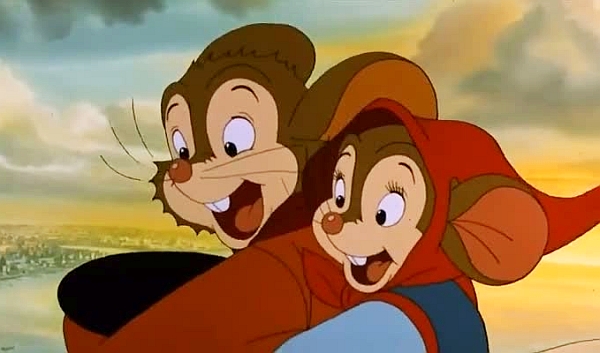
An American Tail takes a much darker turn when Fievel is swept overboard in a storm and separated from his family. The storm itself hearkens back to earlier oppression themes. For instance, Fievel can’t grab onto Papa’s hand because his sleeves are too long, a subtle nod to the family’s poverty. The storm-tossed waves are also personified to look like a monstrous cat, a symbol of Fievel’s worst fear at this point. However, it is not until our little hero makes it to shore safely that his true oppression in America begins. Like human immigrants of his time, especially children, Fievel is picked up off the streets of Manhattan, NY and tricked into working in a sweatshop. He also gets mixed up with a villain named Warren T. Rat, who exploits immigrant mice in a racketeering operation that will allegedly protect them against cats, seen here as New York gangsters or street thugs. When Fievel exposes Warren T. Rat is actually a cat, he barely survives to be reunited with his family.
An American Tail boasts some subtle differences from the other two films we’ve discussed. For example, Fievel is fairly quick to blend into any new environments in which he finds himself. He’s resilient, if not always wise or fully informed. When he finds himself in a den of New York mouse orphans, he quickly adopts their attitude that if his family cared about him, they’d have been looking for him already. Thus, Fievel endears himself to these orphans long enough to achieve short-term safety. Fievel also proves highly adaptable to American life in general. He’s a little taken aback when his new friend Tony Toponi rechristens him “Filly,” but takes it in stride. Although Fievel’s innocence is somewhat damaged, he maintains open-mindedness and wide-eyed curiosity despite past and current trauma. Thus, he quickly makes friends with mice like Tony and Tony’s love interest Bridget. He’s able to help engineer plans to help himself and others escape or outwit oppressors like Warren T. Rat, his gang, and street cats.
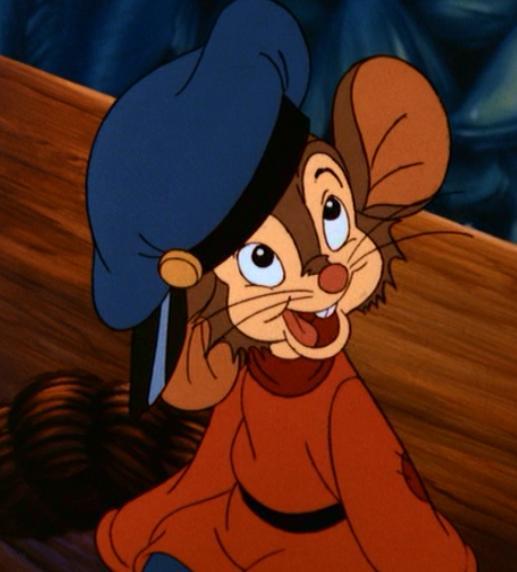
Sometimes, these advantages leave Fievel more open to oppression. Just as Quasimodo learned in The Hunchback of Notre Dame, Fievel learns adapting to your environment and having friends can mean antagonists hurt your friends in order to get to you. (The appliances in The Brave Little Toaster go through this too, but to a lesser degree because not all antagonists know the heroes are sentient). For Fievel, resilience and curiosity also becomes a bad combination because he’s never completely sure who to trust and when. For instance, Fievel becomes pretty close friends with Tony, only for the other mouse to appear to betray him at one point. This fluctuating trus also means Fievel must take a lot of the burden involved in rescuing his new compatriots completely on his shoulders. That’s a tough task for someone like Fievel, who is supposed to represent small children and their accompanying vulnerabilities. However, it does lead to a hopeful ending in a dark and oppressive story.
Fievel uses his growing ingenuity and a legend of a monstrous Russian mouse to rescue the New York mice from the schemes of Warren T. Rat and other antagonists. Using Fievel’s plan, the mice build a terrifying-looking replica of the mouse to attack and frighten away the street cats – just as the Cossack and thug cats terrorized the mice earlier. In what TV Tropes would call Earn Your Happy Ending, Fievel is rewarded for his heroics through new friendships and reunification with the family who had given up on finding him. As in the other films we have examined, everything ends well for our protagonists. What sets An American Tail’s ending apart though, is that it shows viewers oppression can be defeated on a large scale. That is, viewers will probably never see a five- to seven-year-old human defeat a ring of sweatshop owners or adult human traffickers (although this writer often had wild imaginings of doing something like that). But viewers, especially young ones, can take more than a few lessons from Fievel’s story. Notably, they will learn villainous people can’t cope with things like hope, resilience, humor, and cleverness used for good. In the right hands, these traits can not only help cope with oppression, but protect others from it and perhaps end it for good–or at least until the next adventure.
Toy Story 3
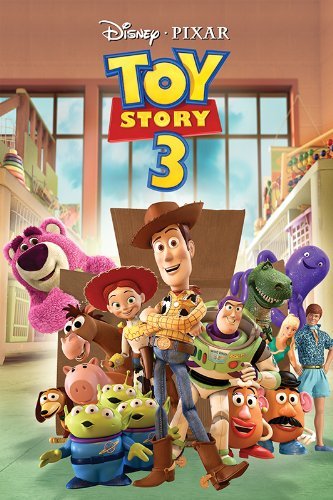
Released in 2010, the culmination of the Toy Story franchise is the most recent film on this list. In a decade where kids are more shielded than ever from harsh realities, new viewers might not expect Toy Story 3 to deal with heavy themes like oppression. Arguably though, this Disney/Pixar collaboration is the film dealing most and best with this theme. The production team compares Toy Story 3 to the prison movie The Great Escape, and have admitted in interviews that the film pays a lot of homage to its predecessor. In addition, Toy Story 3 contains much of the same dark imagery and hidden motifs we have discussed in the preceding sections.
The other films in the Toy Story franchise have already dealt with themes such as growing up, losing friends and loved ones, and what happens when a person becomes “obsolete” or unwanted. Of course, humans are not literally thrown away like sentient toys when they “become obsolete.” Yet all humans feel they’ve passed their expiration dates at times, and that can leave them vulnerable to antagonistic forces, internal and external. This is certainly the case for Woody, Buzz Lightyear, and the rest of the ensemble from Andy’s room. As Andy, once a carefree six-year-old, packs up for college, his toys face the distinct possibility of never serving a purpose again. Woody tries to put a positive spin on getting packed into the attic–“There’s games up there, and books. And those guys from the Christmas decorations box, they’re fun, right?” But his attempts fall flat, especially after Andy calls the toys “junk” in their hearing. He places the toys in trash bags, and Mom, not knowing his true intentions, delivers them to the curb for garbage pickup. Thus, the ensemble goes through many of the experiences and emotions other characters have gone through at first. Like Quasimodo, basically abandoned to rot in a bell tower, or the appliances abandoned at a summer cottage, the toys are taken from or denied their home and safety. Like Fievel Mouskewitz, they are “tossed overboard” to navigate a hostile world on their own.
Our plaything friends are far from helpless. Like Fievel and the Brave Little Toaster appliances in particular, they engineer plans to escape the trash bags and transport themselves to Sunnyside Daycare, where they hope they’ll find a new home and new playmates. At first, it appears Sunnyside will be idyllic. The daycare’s leader, Lotso Huggin’ Bear (Lotso for short) is a congenial stuffed toy who smells of strawberries. He shows Woody, Buzz, and friends around the daycare with a special stop in the Butterfly Room. This room, where the daycare’s oldest children spend their time, is a place where toys are doted on and played with appropriately. Lotso tells the toys they’ll be staying in the Caterpillar Room instead, but the cast takes this in stride–until they learn what constitutes playtime in the Caterpillar Room. As its name implies, this location is for younger toddlers, ages eighteen months to about two or three. Buzz, Jessie, Woody, and the other toys, all of whom were designed for older children, are not appropriate playthings for the Caterpillar kids. In a somewhat disturbing scene with accompanying anxious music, the toys undergo extreme “abuse” at the hands of the toddlers. Buzz has his helmet scribbled on; Jessie and Rex are dunked head- and tail-first into finger paint; a toddler stuffs Mr. Potato Head’s eye up his nose. All the toys come out of playtime battered, exhausted, and determined to get transferred to the Butterfly Room. Buzz, who has taken over as leader since Woody escaped before playtime, assumes getting a transfer will be no problem. But this is where the prison motif and oppression theme really kick in, as the toys discover the hard way Lotso’s congenial nature is a mask.
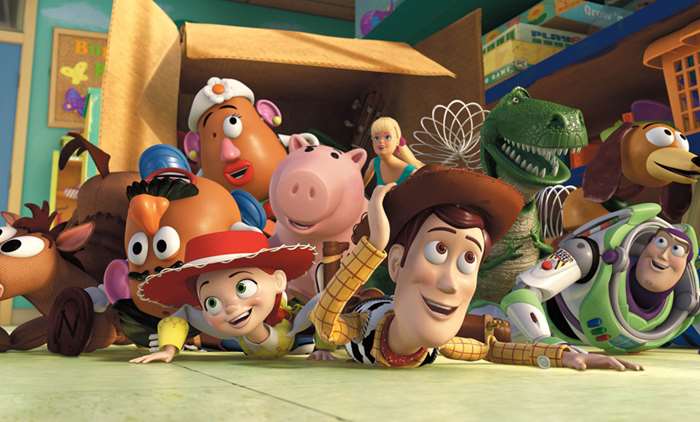
Buzz sneaks out of the Caterpillar Room and finds himself in a sort of “speakeasy” within the daycare’s vending machines, where Lotso’s cronies play “Russian roulette” with a See ‘n’ Say and Monopoly money. As they do, they discuss how the new toys are “toddler fodder” and won’t last a week. This, coupled with the putrid green and sickly yellow of the environment, clues Buzz in that something sinister is afoot. Yet he lets his guard down when Lotso appears to be on his side. Lotso presents being in the Caterpillar Room as something the “stronger” toys should volunteer to do, “for the good of the community.” But even when Buzz is willing to cooperate with this, Lotso and his gang take advantage. They offer to let Buzz, and only Buzz, transfer to the Butterfly Room, and punish him for wanting to protect his “family” of toys. Specifically, Buzz is forcibly switched to Demo Mode, rendering him a sadistic automaton who willingly participates in subjugation of his friends. Parents and guardians who have seen actual prison movies will recognize the homage to formerly “good” inmates who are forced to turn on their compatriots, or who willingly do so to survive in the system.
With their trusted leader oppressing them and Woody MIA, Jessie, Hamm, Rex, and the others seem stuck in a permanent tortuous existence. From Buzz’ transformation on, Sunnyside Daycare loses all semblance of sweetness and light. The green and yellow color palette remains, accompanied with dirtied grays reminiscent of prison walls or cells. At the end of each day, the toys are “locked” in Caterpillar Room cubbies–plastic tubs with wire bars–one or two to a “cell.” Surveillance and hallway patrols are in full force, especially an “eye in the sky” cymbal-clanging monkey who sees every area of the daycare at any time. Woody finds this out the hard way when he ends up at little Bonnie’s home and learns the truth about Lotso from one of her toys. He immediately leaves to rescue his friends, only to discover the plaything “administration” of Sunnyside has “cracked down hard” since he got out. Like Fievel Mouskewitz before him, Woody must find a way to get himself and his family out of their corrupt environment. Woody, though, is at a disadvantage because both his allies and adversaries are toys like himself. Lotso especially makes some chilling points about why it might be best to put up with Sunnyside. Andy has grown up; he’s out of the picture. Without the safety of Sunnyside, oppressive as it may be, Woody and the others risk ending up in the dump and “dying.” In fact, Lotso makes it sound like Sunnyside is everyone’s only choice, since another owner would just grow up too and throw them away.
This gaslighting and psychological abuse, common in “prison” stories, fills the other toys with doubt and fear. Jessie, who once experienced abandonment from her owner Emily, is particularly vulnerable. By this time though, the toys will certainly end up broken and trashed anyway if they remain at Sunnyside. Mr. Potato Head has already been tortured in “the box” once (the sandbox, implied to have fecal matter buried inside). Mrs. Potato Head, who was already missing an eye, doesn’t have good chances physically, either. These examples, coupled with emotional battering, inspire our heroes to undertake a daring escape. Said escape invokes some much-needed comic relief. Woody and the gang get Buzz out of Demo Mode, but he ends up speaking in Spanish and trying to romance Jessie like a Latin telenovela star. Mr. Potato head attaches his parts to a tortilla during one phase, and Rex and Hamm engineer a fake “prison riot” while Woody and Slinky incapacitate the all-seeing monkey. However, said comic relief is short-lived, as the toys end up facing Lotso across the lid of a dumpster. The toys, along with viewers, are reminded death could be imminent.
The last standoff between Woody, Buzz, and Lotso’s factions deal brilliantly with the oppression theme. First, Woody turns Lotso’s attempts at psychological torture back on him, reminding him of his beloved former owner Daisy. “You used to do everything with her…she loved you…as much as any kid ever loved a toy,” Woody declares. Like any villain faced with the truth, Lotso tries to justify his actions, claiming Daisy heartlessly replaced him and his closest companions. But Woody doesn’t buy it. “She replaced you, and if you couldn’t have her, then no one could,” he corrects, effectively stripping the mask from Lotso’s motivations. As is also common in stories of oppression, this causes Lotso’s cronies to turn on him. Lotso takes one more stab at resurrecting his control, claiming Sunnyside is a family, but he chooses the wrong word. “This is…a prison, and I’d rather rot…than join any family of yours!” Jessie yells at him. Barbie also gets a timely line–“Authority should derive from the consent of the governed, not from the threat of force!” It’s often treated like a throwaway joke, but her words ring true to a universal adult theme. They also send a message to even the youngest viewers about how dangerous it is to force control onto others or abuse others for one’s own gain.
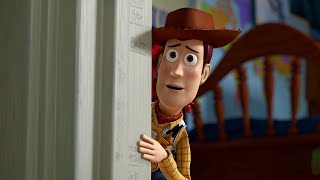
Our protagonists’ story doesn’t end here, though. As with all the oppression narratives we’ve seen so far, they must undergo a tense and potentially fatal climax to complete their journey. This happens when, due to bad timing and a betrayal from Lotso, they all end up scrambling through the landfill, the exact place they wished to avoid. The toys eventually face certain death in the dump’s incinerator, an event some fans claim is a nod to The Brave Little Toaster. Indeed, fiery red backgrounds and the promise of a wholesale, Holocaust-like death hang in the air throughout most of the climax. Everyone faces death with dignity, holding hands and exchanging meaningful looks as the fire sweeps toward them. Arguably, it is only when they accept the inevitable that the toys can be rescued via the dump’s “claw” (operated by the little green aliens, who seemingly had unimportant roles in this film). It can also be argued that the toys can only accept life in Andy’s attic because they have seen the portrait of real, ongoing oppression and abuse.
Parents and guardians need not worry Toy Story 3 teaches kids to passively accept abuse, however. If anything, like so many movies before it, this film shows great examples of what it means to stand up to abuse while sticking with and protecting the people (or objects) you love. Sometimes, this will mean enduring personal sacrifice or getting into situations that look hopeless. Despite how those situations look, hope is rarely if ever lost, as the toys discover when Andy donates them to caring owner Bonnie. Doing the hard thing, the unselfish thing, often reaps the best rewards. In showing this, Toy Story 3 does a wonderful job of explaining what can happen when inevitable change leads to oppression, resistance, and finally acceptance. Viewers learn that when things change, they may never go back to the way they were–Woody, for instance, does not get to stay with Andy as he originally wanted. Some things may have to stay the same–for instance, not all the toys at Sunnyside find homes with individual owners, and so they arguably miss out on developing that relationship. But going through a hard journey with the people you love usually brings greater rewards than anticipated. Specifically, Sunnyside ends up with benevolent leaders in Ken and Barbie, who run the organization democratically. Andy gets to move forward on his journey knowing his beloved toys will be treasured. As for Woody, Buzz, and friends, they “grow up” too, in that they become more open to change, adventure, and better choices than the most obvious and safest ones.
Final Notes
Animated films often look like cutesy romps for children, but some of the best deal with heavy themes. One constant theme is oppression, as protagonists must resist and circumvent the abuses of not only villains, but autocratic living systems and life in general. Some children may not be ready for all the imagery and connotations this theme encompasses; for instance, it’s not a good idea to give seven-year-olds a full primer on the Holocaust after a viewing of Toy Story 3 or The Brave Little Toaster. However, it’s a great idea to show children these films with parental guidance, and to ask the children what they think or have learned afterward. As was the case for this writer and others, it may be your kids learn oppression and abuse will always exist, but with the help of camaraderie, intrinsic traits, and hope, it can be overcome.
What do you think? Leave a comment.
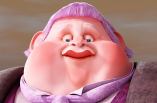

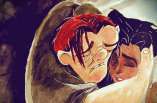








I watched THOND all the time when I was a kid. I loved it so much, my parents had to hide it from me. It really is one of the best Disney movies I’ve ever seen, and I’m really glad it was apart of my childhood. I’m a teenager now, and I still watch it every chance I get. Disney really needs to reconsider re-releasing this.
@venom: That would be really cool, especially if they added new special features to a DVD or Blu-Ray release.
I was at art college with James Baxter, who was the character animator for Quasimodo. He’s one of the best in the business, and now runs his own studio.
Fantastic piece. If you think about it, The Brave Little Toaster is just an introduction to nihilism for children. The appliances have a master/slave relationship with the boy. They only exist to perform their function and when they are unable to do that, they cease to have a reason to live. The Brave Little Toast is really just a college philosophy course for kids.
Did anyone else notice that this movie has a higher death count than The Godfather? That’s really messed up.
No, I didn’t, but now that you mention it–yeah, messed up. And kudos on pulling out the nihilism angle. 🙂 I didn’t even think of that, but then, I’m not a nihilist (like you couldn’t tell, LOL). 🙂
I don’t know…I take a slightly warmer view of the whole relationship. I think that one of the underlying messages was that you only really find fulfillment thought selfless giving. Sort of like “The Velveteen Rabbit”–“only love makes a toy real.” Not exactly a view I associate with Nietzche, but that’s just my take on it.
As for the body count…never thought of it that way. I mean, the way I saw it, only the cars in the junkyard really died. The air conditioner came back to life once the master repaired him, and the appliances at the chop shop escaped, even if they did escape maimed (except for the blender… 😦 ), and the newer appliances at the apartment were just left to stew in their own jealousy. Next time I watch, I’ll have to take notice of who’s not going to make it.
I remember watching this as a kid. It didn’t really bother me. I guess because they were machines and not humans. However, the me of today would probably get teary-eyed at a few parts.
I actually did watch this movie a lot as a kid. It was one of my favorites. Now I look back on it and think “Oh My God, how did I not have nightmares?”
I’m not sure what has changed.. but when I watched An American Tail as a kid, I wasn’t scared. I was sad. I was upset that he couldn’t find his family, etc. But never scared.. We look back on movies like this and think “damn, that looks terrifying” but in fact they weren’t.. Have our views changed on such things? I watched All Dogs Go To Heaven with my nieces not too long ago, and that movie is a little troubling.. but at the time I watched it as a kid, I just thought it was rad..
My theory is, our attitudes toward these movies change because as adults, we can think abstractly. We also have a lot more life experience, and many of us have kids of our own. Thus, we have different perspectives on how terrible and/or oppressive some of the movies’ situations can be. It’s an odd dichotomy, but I’ve found innocence can make oppression easier to handle. Plus yes, as a kid, some of those “terrifying” visuals are pretty cool, or at least non-threatening. (Ex.: The dripping motor oil in Brave Little Toaster is *supposed to be* correlated with blood, but a five-year-old may not get that, so…)
Children can deal with a lot more than we give them credit for. I wish kid’s movies still had terrifying and disturbing moments like they did way back when. The world is big and scary, why pretend like it isn’t? Those moments are something I wish I could still experience.
I liked it, but damn, was it heavy.
Kids these days are too soft.
Hmmm…interesting. I don’t know if they’re too soft, as much as they are ridiculously sheltered. I remember going to church with parents of classmates who could not believe, for example, that my parents were not pulling me out of English and forbidding me to read stuff like To Kill a Mockingbird or Huckleberry Finn because “it has bad language!” Now, there were things that as a kid and teen, I legit wasn’t ready for, and I would approach adults with that and tell them how I was feeling. But I was always made to feel that, “You’re a smart kid. You’ve proven trustworthiness and you know your own mind/spirit. If you have questions or concerns, you know where to come.”
I don’t think a lot of today’s kids get that, whatever traditions they’re raised in. The tendency toward overprotectiveness is strong. But if we as adults are responsible and *guide* kids through these themes and discussions, they can handle a lot more than we think they can. For example, a fourth-grade teacher may act horrified if a kid asks something like, “How did this Medieval heroine go to the bathroom/deal with her period?” But why should that teacher be surprised? Kids know this stuff, and they need/want to learn more, from trustworthy sources. I say, let them.
Having watched a lot of ‘kids’ films with my 4 year old daughter, it has surprised me just how far many of these films are willing to go to get an emotional reaction from children.
Animated films aimed at children are no longer just bright colours on a screen where everyone is happy all the time, they deal with some pretty heavy stuff. The end of Inside Out where Riley breaks down crying is intense and I totally didn’t expect it when I sat down to watch it. Hell even the end of Trolls they set the Chef on fire and send her rolling down a mountain.
That’s nothing new though. As a child of the 80s I saw Neverending Story, Raiders of the Lost Ark, Empire Strikes Back and a thousand others on the big screen. They were far scarier than your average mainstream kids film today. There are honourable exceptions though – Paranorman, Coraline and Frankenweenie in recent years have all done sterling work in scaring kids in exactly the right way.
I loved the ending of Inside Out, because it’s so darn honest. It tells kids, “You feel what you feel and as long as you’re constructive with it, that’s okay.” I think Inside Out may also be one of the only times I’ve seen adult characters admit to kids, “I’m sad, too.” It was moving and even at my age, comforting.
Hellfire is the best villain song of any film, let alone Disney. The late Tony Jay does a phenomenal job as Frollo, one of Disney’s most evil, yet most human villains. You might struggle to find a Scar or Jafar, but people like Frollo do exist, which serves to make him all the more terrifying.
And that’s something I love about Frollo. I hate him because well, you’re supposed to hate villains, plus, he gives Christianity a bad name (but then, plenty of real people do that). But I love his complexity and subtlety (when compared to the Scars, Jafars, and Maleficents of the Disney pantheon).
The Hunchback of Notre Dame is easily my favorite disney movie of all time, and the one disney movie which i keep finding new stuff and depth in no matter how many times i watch it. It is also strikingly intelligent, opting to actually discuss the contrasts and problems of religion (the deacon i think was actually an improvement over the book, as we get to see both religion done right and religion done wrong, which is important. it doesnt just blame, but also remembers that religion can be good and that people just get it wrong (take a look at “god help the outcasts”). Once you actually get the lyrics for the chorus, it unlocks a whole new level of the movie, and to be fair, it gets even better if you remember all the stuff not obviously on screen;
This is one of my absolute favourite Disney animated films…. Hellfire is one of the best songs of any film… let alone a Disney film…
I bought Hunchback on iTunes on the strength of the article and really enjoyed it. My only gripe is I find Demi Moore very jarring, although I admit I dont like her in any movies either.
I was at the world premiere in the Superdome in New Orleans with my young children. It was quite a spectacle. Much of it went right over the head of my children but I loved it. I was struck by the dark overtones especially Frollo’s anguish over Esmarelda in his chambers. Years later at Disney World when they used to showcase villains, I got a picture of my kid with Frollo, easily one of the most wicked villains in Disney history.
The Brave Little Toaster was the most traumatic kids’ movie ever. (I feel like the 80’s were just a disturbing time for kids’ media.) It’s not just the disturbing scenes, it’s the sheer amount of them. The whole movie is a constant progression from one terrible thing to the next with no happy moments to break it up at all.
This is miserable, awful, traumatizing…I must have more! Hey, the darker the journey, the brighter the light at the journey’s end, I say. And any movie with THREE villain songs is cool in my book.
The Brave Little Toaster isn’t dark at all. It all depends on how your mind sees it. I have been diagnosed with PTSD and disassociation, anxiety, depression, etc. I have severe panic attacks and dissociation episodes every single day. But guess what? TBLT actually calms me down when I get like this. It also keeps me from cutting and killing myself when I have those thoughts. Seriously, I can name several movies, Disney and non Disney, that are way darker. With all this being said, TBLT saved my life a lot of time and is continuing to do so. It’s my favorite movie in the world! 🙂
Wow–I never thought of it like that, but I can see exactly why TBLT is cathartic for you. I wonder if, on some level, you are a member of the audience the movie was actually created for, as opposed to little kids? It wouldn’t surprise me at all.
I love The Brave Little Toaster but dear god some of the moments of it.
I think it’s awesome that this movie has been able to calm you down and save you in times of darkness.
Toy Story 3 is a great movie. The furnace scene really had me thinking ‘No, they’ll escape. Any second now. Any… second…. OH GOD THEY’RE GOING TO DIE! Oh no they made it’. Just for split second they made me think it was all over.
I had a similar reaction. I remember sitting there thinking, “Are they really gonna do that? CAN they do that? Isn’t it like, against the unwritten rules of animation or something? Oh Lord, they’re gonna do it, this is going to be all over social media as thousands of children are traumatized…wait, what? They did what? Oh, whew, we’re fine. We’re cool. We’re good. Oh, no–oh, no, where are my tissues?”
Not long after Toy Story 3 came out I went to a talk organised by the BBFC where one of their assessors used the film as a case study. In the UK it was Classified as a U (G is the equivalent for the USA). The assessor said that this was because it was only adults who were upset by the furnace scene. They had tested it with kids and they were not at all upset by it – they didn’t have the same attachment to the characters and also didn’t understand the references it was calling on to signal impending doom.
@Julio: Yeah, maybe it’s just that adults are wimps. 😏
This scared the crap out of me as a kid, but I watched it so many times the tape broke. Very weird, and now I’d hate to re-watch it, just in case you know.
I loved American Tail so much as a kid. Probably my favorite kids movie after The Last Unicorn, which is way more mystical and more terrifying.
I think most of Don Bluth’s movies are pretty heavy. The Secret of NIMH was even worse. Watching them as an adult lets you appreciate them more. They’re pretty awesome.
Oh, The Secret of NIMH. Don’t get me started…
If we speak about openings, Hunchback is up there with The Lion King for setting the scene.
Hunchback reminded me of Legend Of Zelda Majoras Mask for the N64 which the Legend of Zelda stories are not usually very dark but MM was an exception filled with emotions tugging at your heart and in both that game and thiws movie you can’t help but feel for each and every character. Like the guy who got free from the cage and shouted: “I’m free! “I’m free! *Trips and falls into the prison stock and lock* Dang it!
The only other film that was as dark as this is Toy Story 3 more then 10 years later from the release of this flim.
I love this post on great Disney films. It was well-written and enjoyable to read.
Hunchback of Notre Dame is one of those Disney movies that is ‘not’ a Disney movie, much like Watcher in the Woods, Dragonslayer and Black Cauldron. It really is a great film but veyr very adult, both in tone and style. I would think its not a ‘kids favourite’ but really this is a modern hidden gem that shows that through all the sugar and gloss and Disney can still get away with a shot or so or darkness when nobody is looking.
I remember Brave Little Toaster! Or the bits that haven’t been blocked out anyways…I was definitely afraid of running over the vacuum cord for many years after watching this. Now that you’ve gone over it, I do remember being very traumatized by this movie.
Hunchback of Notre Dame is my favourite disney film from script to lyrics. Beautiful and so unlike Disney. The lead doesn’t win the girl but shows you can be different and be beautiful inside. I think it’s the best disney film for showing this. You don’t have to be a princess, you don’t have to use magic to get the love interest, you don’t need to be soft featured & physically attractive as a cartoon. You can be yourself and people will judge but meh! 🙂 I just think its a very clever playwright & I believe it needs more credit. A broadway show maybe?! 😀 x
as a child this was my favorite film, i`m 18 now and would happily watch it over and over, as a music student looking back at the songs i am asstounded that disney would allow such dark lyrics compared to there other films but i am so glad they did because along with the feel of the film they give it bite and make the film really enjoyable.
Esmeralda is my favorite “princess.”
Esmeralda is my favorite unprincess.
Interesting discussion, I’m not entirely sure I agree with all your premises, however, it is thought provoking which is always a wonderful thing!
I really like the animations which are shared above.
I remember watching these films (except for Toy Story 3) with my children, often more than once and while there are dark moments, I never thought in terms of the word oppression. A good essay with a perspective I had not considered.
Like the phrasing of the title and the seamless and thorough examination of a mature topic within the children’s titles. Not an easy maneuver, by any stretch of the imagination.
“Disney’s The Hunchback of Notre Dame, released circa 1996, is probably the darkest and most infamous film in the Disney canon.”
You make a great point here about the darkness of the animated film, The Hunchback of Notre Dame. It is one of Disney’s darkest films. However, The Black Cauldron trumps Hunchback. Tim Burton worked on that film as an animator. That should say something about the visual emotion and darkness of the film and it did not do that well in the box office as well. At first, it was so dark that Roy Disney was very concerned. The film did not fit the Disney style of animation nor was it child friendly. They did cut some scenes from the movie to help the story and tone down the dark factor, but it still had a lot of story issues and darkness that did not appeal to the audience. The Disney Company released it and accepted it as a financial loss.
Disney’s Beauty and the Beast was also very dark but it had a strong story and the darkness of the film was justified. The songs in the film were delightful and memorable as they were preformed buy inanimate objects such as a candlestick, clock, and teapot. I can name several songs from Beauty and the Beast and The Hunchback of Notre Dame. Not so, from The Black Cauldron animated film.
animated movies always best to watch
Oppression was a theme that Hugo employed in Les Miserables as well.
I’m always interested in conversations about Frollo, such an atypical villain for Disney. Hunchback in general really doesn’t read as Disney film at times. American Tail is also a great one despite the happy ending being a little too on the nose
The Hunchback of Notre Dame is my favorite Disney movie and has been since my freshmen year of high school. When I was a kid my favorite Disney movie was The Lion King, Toy Story 1, Aladdin and Tarzan. While I still love Lion King, Toy Story 1, Aladdin and Tarzan, but Hunchback outranks all four of them in my opinion.
Esmeralda is the hottest Disney character (along with Kim Possible and Jessica Rabbit) and is my favorite Disney character (along with Kim Possible and Goliath). Judge Claude Frollo is by far my favorite Disney villain and Hellfire is all time favorite Disney song. God Help The Outcasts and Someday (Deleted Song from the movie) makes me cry every time. I also like Quasimodo and Phoebus. Yes, I even like The Gargoyles, but I can’t stand Dory in Finding Nemo so what the hell do I know. A Guy Like You is my least favorite song but I still like it.
I also like this better then the Victor Hugo novel. The Victor Hugo novel was slow, boring, too long emo and pretentious. Quasimodo and Esmeralda aren’t very likeable in the book so when they die I didn’t feel anything. Also Claude Frollo in the book was kinda lame. Him being a priest made him less of a threat because unlike Judges have more authority than priests thus making him scarier. Turning him into a judge definitely made him scarier. Also Frollo being more sympathetic in the book kinda made him lame as well.
You see, that’s funny. I completely agree that in this case, the movie is better (I tried to read the book in eighth grade, and aside from eighth grade being too young for that, I didn’t enjoy it. This despite the fact that I had enjoyed other classic literature). For me though, had they kept Frollo a priest, he would’ve been scarier, but that may just be because I grew up in church and was used to trusting the majority of adults in the church/members of the church hierarchy. Then again, Disney would *never* have gotten away with outright criticizing any church or faith. (Whether they do this subtly is up for long, hot debate). But yeah, overall it’s a great, underrated movie.
The reason I think Frollo as a judge being scarier than him being a priest is because judges have more power. But I see you’re getting at.
I just think Esmeralda and Quasimodo to be more likeable in the movie than they are in the book.
They are absolutely more enjoyable in the movie.
I also couldn’t stand Pierre Gringoire. He got on my nerves.
Movies like these prove that there is a way to discuss social justice issues in visual media well, and that art and politics are often intertwined.